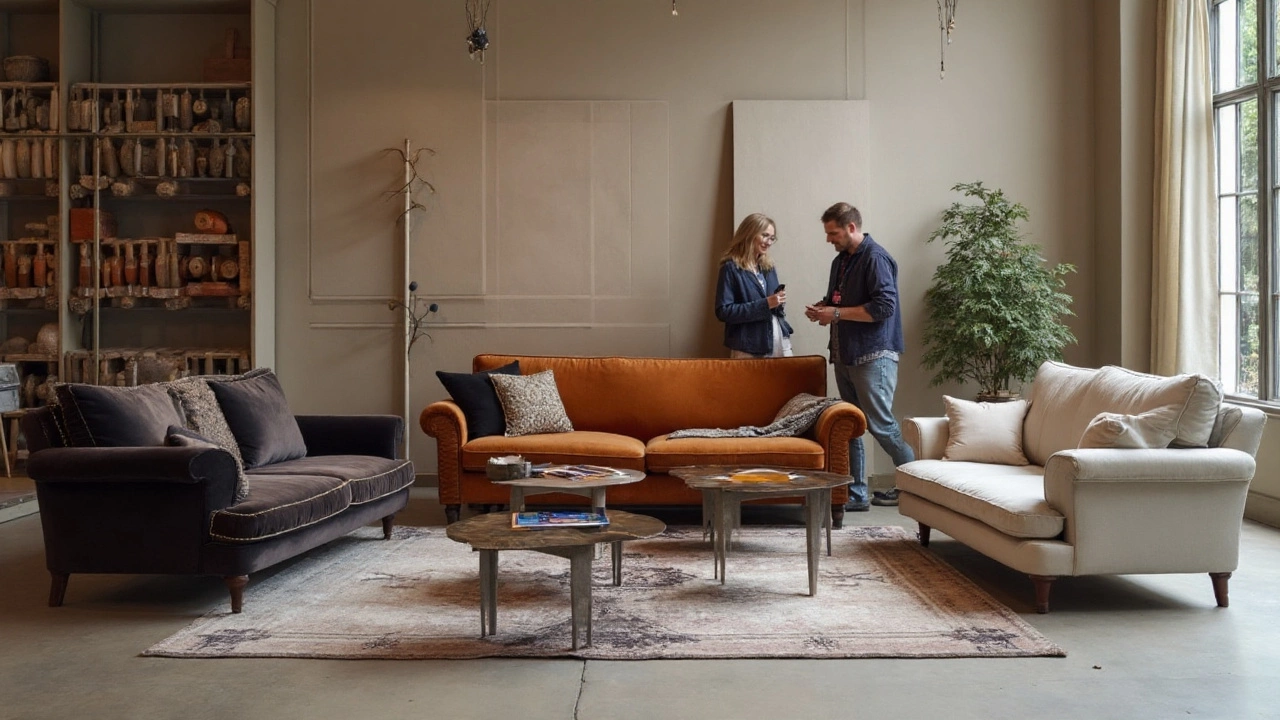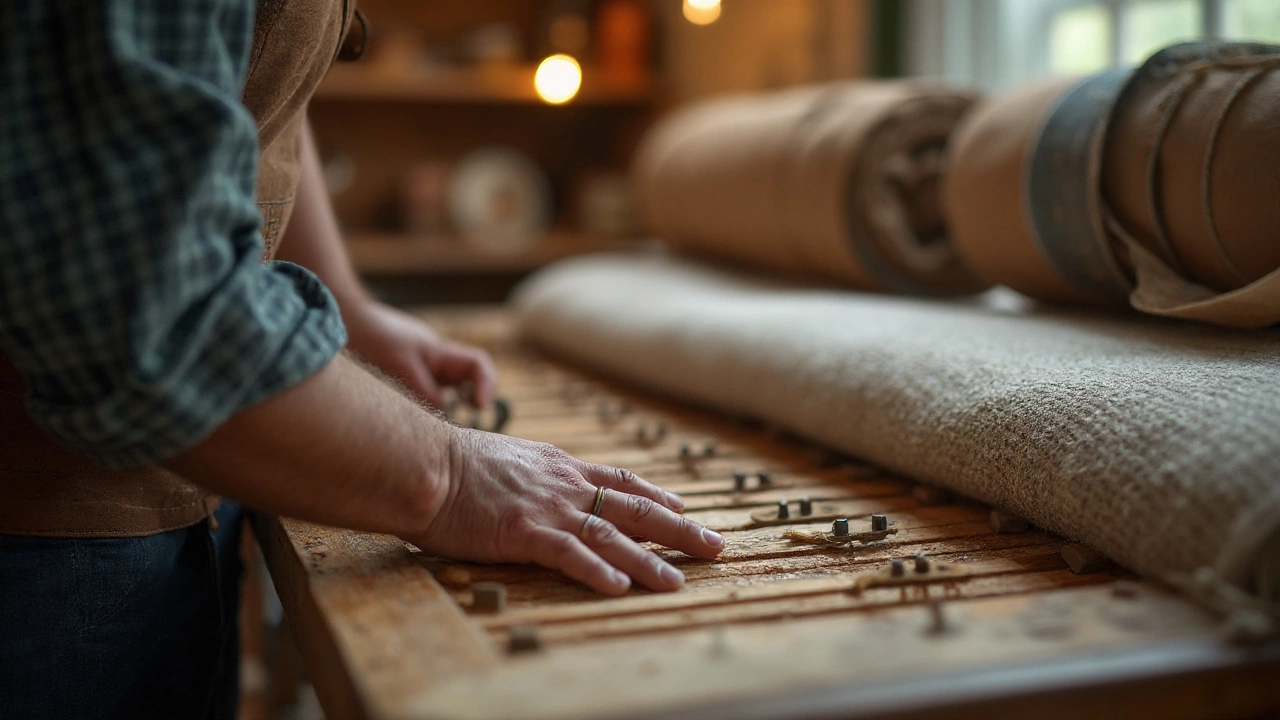Sofas That Last The Longest: Your Guide to Durable Couch Materials and Construction
 Aug, 8 2025
Aug, 8 2025
Ever noticed how some sofas seem to hang around forever—outliving fashion trends, family pets, and even your enthusiasm for home projects—while others barely stagger through a few years? The difference isn't magic. It's all about what you can't always see: the guts of the couch, the fabric on top, and whether your new favorite spot will still have your back after a decade of Netflix binges. If you want a sofa built to survive everything your life can toss at it (spilled wine included), you need to dig deeper than just color or style. Let’s pull back the cushions, check the facts, and find out what type of sofa lasts the longest.
Why Do Some Sofas Last Forever? Secrets Behind Upholstered Endurance
The real story starts inside. Under that fancy velvet or bouclé, the longevity of your sofa comes down to two biggies: the frame and the suspension. If the bones are weak, it doesn’t matter what’s on top—it'll collapse. Kiln-dried hardwood, like oak or maple, reigns supreme when it comes to frames. Moisture is sucked out in special ovens, making the wood less likely to crack or warp. Particle board, MDF, or softwoods like pine cost less, but break and bend like a bad handshake over time.
Laser in on the suspension system. Good sofas usually have eight-way hand-tied springs; craftsmen tie springs to the frame in every direction, spreading weight evenly and handling years of plopping down. It takes hours of handwork—so these sofas cost more, but you'll feel the bounce and see less sagging over time. Sinuous (or serpentine) springs, which look like squiggly lines, are pretty common too. They're cheaper, but if they’re not thick and tight, that seat will droop or squeak faster than you’re ready.
Let’s talk joinery. Look underneath or inside—if you spot solid wood joined with dowels, corner blocks, or screws, you’ve got a winner. Staples and glue don’t inspire confidence. Check furniture reviews online from real people. Plenty of couch survivors share photos of their fifteen-year-old pieces, especially if made by brands like Ethan Allen or Stickley. Insider tip: if a frame comes with a lifetime warranty, that’s a brand betting big on its own work.
Fabric Matters: The Truth About Sofa Upholstery and Longevity
If the frame is the skeleton, the fabric is the skin, taking the brunt of spills, sun, claws, and collisions. All fabrics are not created equal. Leather sits in a league of its own—real, full-grain leather gets better looking and stronger as it ages, gaining that soft, lived-in look famous in classic English libraries or cozy coffee shops. It’s expensive and can scratch, but little nicks usually buff out over time and it’s almost impossible to rip.
For fabric sofas, tight weaves and synthetic-blend or microfiber fabrics score high for resistance to stains, fading, and pilling. Polyester, nylon, and acrylic blends are tough customers, repelling water and resisting daily abuse. Sunbrella—a name you’ll hear from outdoor furniture fans—now makes indoor lines for the accident-prone. Cotton and linen can look high-end but, unless mixed with synthetics, they’ll fade and wear out much faster.
Look for the double rub count. This is a test, measured in thousands, where a machine rubs the fabric until it breaks down—think of it as each time you sit or slide. Fabrics above 20,000 double rubs will last years in heavy-use homes. Anything over 50,000? That’s hotel lobby territory—nearly indestructible.

What Kind of Sofa Construction Actually Lasts?
Sofas with removable, reversible cushions often win the age game. When you can flip and rotate cushions, you spread out the wear. Foam density is key—1.8 pounds per cubic foot is the bare minimum for longevity, but 2.0 or even 2.5 is much better for a sofa that stays firm for years. High-quality polyester-wrap or feather-down blends in cushions keep their shape and softness longer—down side is they may need a little fluffing from time to time to prevent sagging.
Have pets or kids? Zippered, machine-washable cushion covers mean you don’t have to live with stains or replace the whole sofa because of tomato sauce. Double-stitched seams stop unraveling, and Velcro fixes for keeping cushions in place hold up longer than snaps or nothing at all. Watch out for nailhead trim or other decorative bits, which can come loose—unless they're well-fastened, they’ll drive you nuts picking them up from the floor.
Here's some data that might help when you compare sofas:
| Material/Construction | Average Lifespan (Years) | Notes |
|---|---|---|
| Kiln-Dried Hardwood Frame | 15 - 25 | With proper care; avoid moisture |
| Engineered Wood Frame | 5 - 10 | Less durable, can warp |
| Full-Grain Leather Upholstery | 15 - 25 | Improves with age, easy to clean |
| Polyester/Microfiber Fabric | 7 - 15 | Resists stains, fading, pilling |
| Cotton or Linen Upholstery | 5 - 10 | Prone to stains, fade faster |
| Eight-Way Hand-Tied Springs | 20+ | Best support, higher upfront cost |
| Sinuous Springs | 8 - 15 | Depends on wire gauge and placement |
Do Expensive Sofas Always Last Longer?
Price tags can be deceiving. Sure, a $4,000 sofa loaded with bells and whistles from a reputable shop will probably stick around longer than a $400 fast-furniture quickie. But don’t let branding or price do all the talking. Direct-to-consumer brands like Burrow or Joybird deliver genuine hardwood frames, sturdy joinery, and performance fabrics for less than you’d think—and their sofas actually survive real-life use.
Avoid getting dazzled by thick, squishy armrests or luxe looks alone. Sometimes cheaper furniture gets an expensive design update but the internal materials are the same as budget sofas. Check warranty policies, ask about the frame type, and try to push the display model. Squeaks, wobbles, or cushions that bunch or flatten are red flags. And high-end European brands? Not always tougher; sometimes you’re paying more for sleek modern looks, not for lifetime construction.
If you’re shopping vintage, older sofas often have kiln-dried hardwood frames and eight-way springs built by hand—that’s why they’re still hanging around thrift stores and antique shops. Reupholstery isn’t cheap, but it can mean you get a sofa with a fresh look and another twenty years of life.

Real Tips for Getting the Longest Life from Any Sofa
Let’s face it—no sofa is bulletproof. But you can seriously stretch its lifespan with smart habits. Keep it out of direct sunlight to avoid fading (especially for fabric or colored leather). If it’s resting on carpet, rotate its position once in a while to keep the legs from warping or impressions from settling. Vacuum under the cushions—you’d be amazed at how much debris can cut through fabric or invite bugs. And treat any stains fast, according to the manufacturer’s guide; don’t just guess with soap and water, especially on leather or specialty fabrics.
If you have pets, drape throws or use washable covers for the spots they claim. Trim claws regularly to avoid scratch marks. Flip and rotate loose cushions every few months. If someone accidentally topples a drink, blot (don’t rub) and use appropriate cleaners—store-bought solutions for microfiber, special saddle soap for leather. Every couple of years, consider a professional cleaning; it keeps allergies at bay and perks up tired fabrics.
Last thing: don’t forget the legs and frame. Tighten screws or bolts yearly—those wobbles don't fix themselves. If you move, always lift (not drag) your sofa, and protect any corners or arms with moving blankets. Treat it well, and it’ll treat you well for years—even decades.